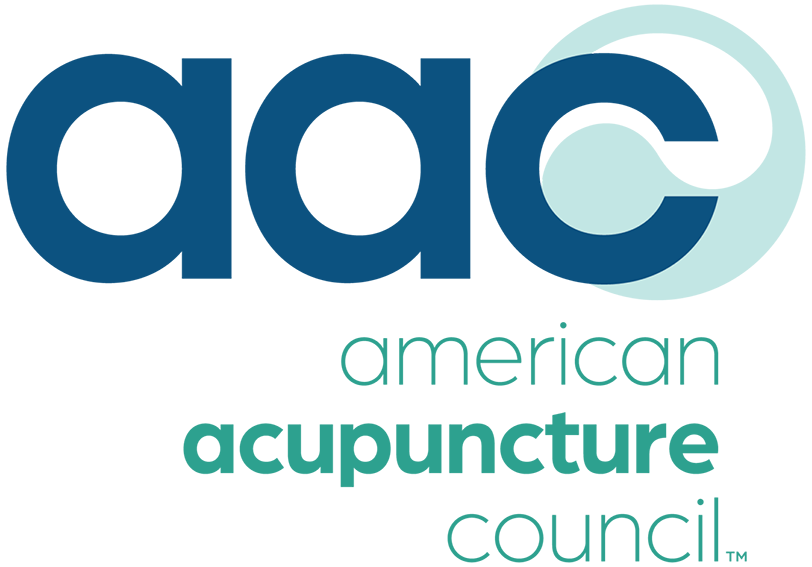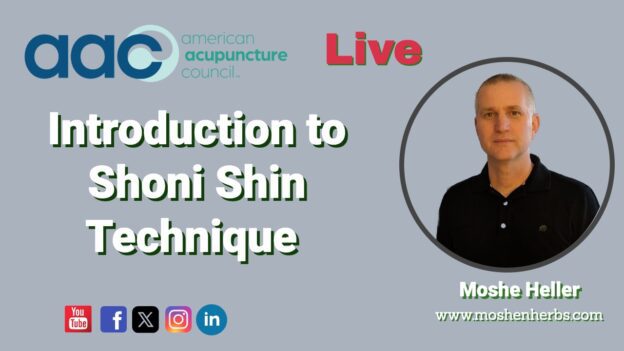So I wanted to present the technique of using Shawnee Shoni Shen for the treatment of pediatric patients, but actually what I want to also, point out today is that this, that we can actually use sh hin for adults.
Click here to download the transcript.
Disclaimer: The following is an actual transcript. We do our best to make sure the transcript is as accurate as possible, however, it may contain spelling or grammatical errors. Due to the unique language of acupuncture, there will be errors, so we suggest you watch the video while reading the transcript.
Hi, my name is Moshe Heller from Jingshen pediatrics.com. I want to thank the American Acupuncture Council for letting me do this show today. And today I will be talking about Shoni Shen. So let’s move to the. Slide. So I wanted to present the technique of using Shawnee Shoni Shen for the treatment of pediatric patients, but actually what I want to also, point out today is that this, that we can actually use sh hin for adults. And it all depends on how we use this technique. Generally speaking, sh hin is a technique for stimulating the channels and acupuncture points instead of using needles. And it was developed in Japan in a long time ago, and it is very effective if it’s used correctly for the treatment of both pediatrics and adult patients.
And there, although we use this, the name shone and it seems like it’s one style, but there’s actually many styles of sh and many tools. And each tools, each tool is actually a different. Used for a different style. Generally speaking, when we are using SHO Shoni Shen, we always hide the sensation from the tool.
We really should be looking at our own chi and how we are positioning ourselves and being aware of our own QI so that things are really loose and flowing well. We also should always be clear on our intention on what we’re trying to achieve when we’re using these techniques. Generally there are many techniques.
I’m going to be mentioning five techniques. And I will also show you the different tools that are appropriate for each one of them. The first. Technique is a tapping technique when we use a tool that for specific points or along a channel and we tap on the skin with the tool to bring the chi up to the surface.
We also try to tap in different angles to produce a different effect so that it’s not constantly using the same angle. The second technique is called scraping, where we use the tool to scrape along the channel. So both tapping and scraping follow the flow of the channel and usually done within the flow of the challenge.
So we’re following the flow. Of the channel, we we use both tapping and scraping. So the idea is first we tap, we call the chia up to the surface, and then we scrape in order to make the chief flow within the channel. The tool that I use or is commonly used for tapping and scraping is called the Y Yama.
I’ll have pictures in a second, but this is the tool. Where you can, it has an edge that we can use for tapping, and it has an edge that we can use for scraping. And as I mentioned, hiding the sensation is very important. So we use our, both, our finger and thumb to hide the sensation from or distract the sensation from the patient.
The other technique I wanted to present here is called a stroking technique. And for that it, we use a different type of tool. That tool is called a dashi tool, which looks like this. And a dashi tool is made for stroking, stroking. Again, as I said, in all shown hin techniques. We need to hide the sensation so it’s not so blunt, and we will stroke the patient in a certain direction.
And that’s called stroking technique. And we use the dashi tool and, and that’s a special tool for this technique. Also with the dashi, we can use either pressing or vibrating. So we use the other side of the tool and we can press on a point and vibrate it to create pressure and vibration And, so this is the use of the dashi, and the last one is called scra scratching sounds. We call it scratching, but it doesn’t, we are not scratching with anything sharp or anything like that. Scratching just means that we are not, it’s like we’re scratching our skin. We are not following the direction of the channel.
And usually we use a tool that has a wider. Or a rounder or bigger kind of edge, and we scratch along the channel, meaning going backwards and forward creating more of a dispersing effect. So these are examples of these five techniques. There are many more techniques and the idea is that we can definitely affect the points and create a very strong treatment for without using any insertion of the needles.
And this is comes from the idea of sh Shoni Shen here. I have a few pictures of for you to to look at. This is a, which is also used for more specific points. And usually comes in a very more fine, form. And then there’s engines which are wider, which I mentioned before to use for scratching.
There’s also a teardrop engine, which enables us to either vibrate or pass press specific points. And this is the Y Yama that I mentioned before. This is pictures of the dashi tool that I mentioned that I showed you, which enables us to do stroking. And and these are some other different tools that are available for different techniques.
I just want to finalize the idea that in Shoni Shen there are usually, two phases in treatment. The first phase is usually a generalized treatment, especially when we’re UU using s sh for babies. The first thing I do is do a generalized treatment where we go over most of the channels.
Or we call it a basic treatment. We go over most of the, or all of the channels, and we create a harmonious flow by tapping, scraping, or stroking or vibrating on certain points to create a harmonious flow. And then. After we do that, we usually can focus more on the basic pattern of disharmony that the patient presents and choose point and use them accordingly to create the effect that we’re, wanting. If you, sh machine is a process a technique that you study and you continuously study and get better with as you practice it, as you perform it therefore it. Something if you are interested to explore, it’s something you need to develop or find ways to learn it and develop the technique.
There are different institutions that do that. I, i, myself come from the Jingshen Pediatrics course and we also teach Shian over there. If you are interested please look into Jingshen pediatrics.com. So I hope this really helped you be interested in, Shoni Shen technique, which is a very gentle but powerful technique to add to your tools in the clinic.
And I want to thank the acu, the American Acupuncture. Counsel for letting me present this amazing technique to you all. Thank you very much for your time.






